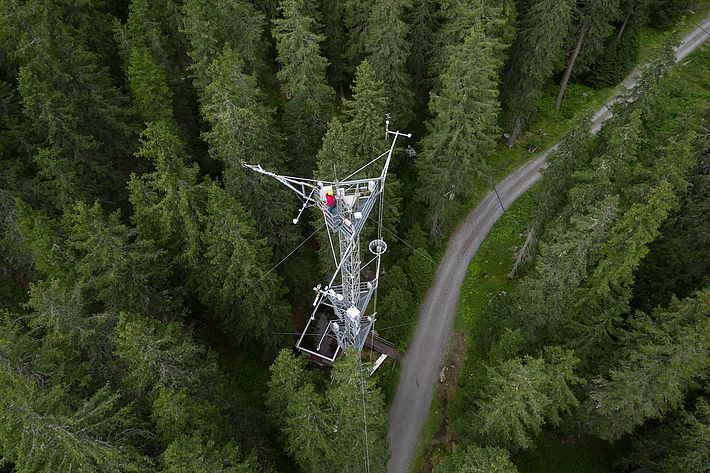Half of the carbon emissions released to the atmosphere by fossil fuel use are re-captured by the ocean and land ecosystems. The Integrated Carbon Observation System Research Infrastructure (ICOS), in which Switzerland participates with two stations, records these carbon fluxes. A recent article describes for the first time the structure and functioning of ICOS.
Oceans and ecosystems such as forests are so-called carbon sinks - they absorb carbon from the atmosphere and store it for a certain time. However, many questions are still open about these sinks: How large are they, how will climate change affect them and how long can they keep carbon - or the greenhouse gas CO2 - out of the atmosphere? How exactly do these sinks work and will they be preserved in the future? Answers to these questions are vital information for societies that must decide on pathways to climate neutrality.
"We have the tools to measure these greenhouse gas fluxes. Some of us measure them since decades”, says Nina Buchmann, Professor of Grassland Sciences at ETH Zurich and co-author of an article in The Bulletin of the American Meteorological Society (BAMS) describing the structure and functioning of ICOS. “Only with such long-term, harmonised time series”, she adds, “can we detect and understand the response of the biosphere to slow changes in climate”.
Nina Buchmann is Head of ICOS Switzerland. ICOS scientists and technicians from the Swiss Federal Institute for Forest, Snow and Landscape Research WSL and from ETH Zurich together run one of the ICOS Switzerland stations: the ICOS Davos station located in the Seehorn Forest in Davos.
High quality greenhouse gas measurements throughout Europe ¶
ICOS was designed as the European in situ observation and information system to support science and society in their efforts to mitigate climate change. It produces standardized and open data, currently from over 140 measurement stations across 13 European countries. Switzerland contributes with two stations to the network: Jungfraujoch and Davos, both of which are unique in terms of station history, location, and integration into national and international research programs.
The ICOS stations observe greenhouse gases in the atmosphere and carbon and greenhouse gas fluxes between the atmosphere, the land surface, and the oceans. The network covers the European continent from Scandinavia to the Spanish peninsula, and from the British islands to Hungary and Czech Republic. The adjacent oceans are covered by ship lines and research vessels operating on the area. Switzerland, with its exceptional geographic location in the central part of the Alps, is an outstanding node within the ICOS network.
ICOS Switzerland
ICOS Switzerland consists of ETH Zurich (National Focal Point), Empa, WSL, the University of Bern, the University of Basel, and MeteoSwiss. It has been funded by the Swiss National Science Foundation, in-house contributions, and the State Secretariat for Education, Research and Innovation since 2013 (Phase 1: 2013–2017; Phase 2: 2017–2021, Phase 3: 2021-2025).
Contact ¶
Prof. Dr. Nina Buchmann
ETH Zürich
Institut für Agrarwissenschaften
nina.buchmann(at)usys.ethz.ch
+41 44 63 2 3 9 59
Zürich
Links and documents ¶
- The ICOS article is published in The Bulletin of the American Meteorological Society (BAMS).
Copyright ¶
WSL and SLF provide the artwork for imaging of press articles relating to this media release for free. Transferring and saving the images in image databases and saving of images by third parties is not allowed.



